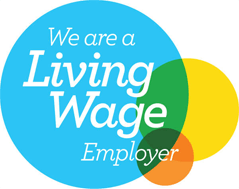Mind The Gap On Equal Pay Day 2017

Today is Equal Pay Day 2017 and tomorrow we see The Equality Act 2010 (Gender Pay Gap Information) Regulations 2017 come into force.
The overall aims of the Regulations is to expose inequalities in pay between men and women. It requires large employers to produce annual reports each April about median and mean gender pay gap figures for both wages and bonuses across their organisation in the preceding year.
To which employers do the regulations apply?
The regulations apply to private and charitable sector organisations engaging 250 or more employees in the UK on the ‘snapshot’ date of 5 April.
To determine whether the regulations apply to them, businesses must identify how many “employees” they engage in the UK. This definition encompasses “workers” but it expressly excludes partners of firms.
How do the regulations work?
Employers must identify which of their employees are “full-pay relevant employees” on 5 April. This is to ensure that those on reduced pay, typically statutory maternity pay, and longer-term statutory sick pay, do not distort the average salary figures.
For “full-pay relevant employees”, employers must produce reports about the difference between the mean and median hourly rates of pay and bonuses of men and women over the 12 months preceding this date. The regulations set out a formula to be used for calculating these averages.
Employers must report on the mean and median amounts as between men and women, as well as stating the proportions of men and women who receive bonus pay.
The pay reports, to be certified by a Director, should be made available on each business’ website for the public to view. Employers should also upload their reports to a Government portal.
When will the first reports be available?
The first reports should be published in April 2018, based on earnings and the gender of those employed between April 2017-18.
Will employers comply?
Astonishingly, there are no formal sanctions for failing to publish compliant reports. The government have instead opted for a ‘naming and shaming’ approach for employers who fail to upload their reports.
With the media increasingly focusing their attention on the gender pay gap it is to be hoped that employers will comply to avoid adverse publicity around gender pay discrimination.
Advancements in pay roll software will help to reduce the administrative burden on employers, however the software itself is unlikely to be sophisticated enough to meet these reporting requirements.
However, employers will still need to decide who they identify as workers, which could well include agency workers and those who are self-employed for tax purposes. For businesses who employ people to work internationally, there will be further issues to consider. Even what counts as ‘pay’ may require HR/legal input.
No doubt this will be a thankless task for large employers whose workforce and contractual arrangements are less than straightforward.
What will the regulations do for women?
Probably not a lot. Although employers may feel compelled to offer an explanation for these adverse trends and will produce ‘action plans’, there is no definite obligation on employers to ‘close the gap’.
Given the formula that employers will be required to use to calculate hourly rates of pay, the reports may produce misleading results, particularly for those on zero-hours contracts, many of whom are women.
Even putting the methods of calculation aside, by reporting on averages rather than terms, and by preserving the identities of the employees in each quartile, the reports will not allow women to identify specific comparators for the purposes of pursuing an Equal Pay Claim.
At most, they will expose a gender pay gap, and show a general trend that men occupy the higher quartiles while the presence of women is concentrated in the lower quartiles. This is likely to reveal disparity in abstract terms, but that will be of little surprise or comfort to those with the greatest interest in seeing real change.
In short, relatively few employers will embrace The Equality Act 2010 (Gender Pay Gap Information) Regulations 2017 or see it as real catalyst for change. Once the first reports are published in 2018, I predict that the consensus will be that the regulations are ineffective and are just an additional layer of red tape for large employers.


